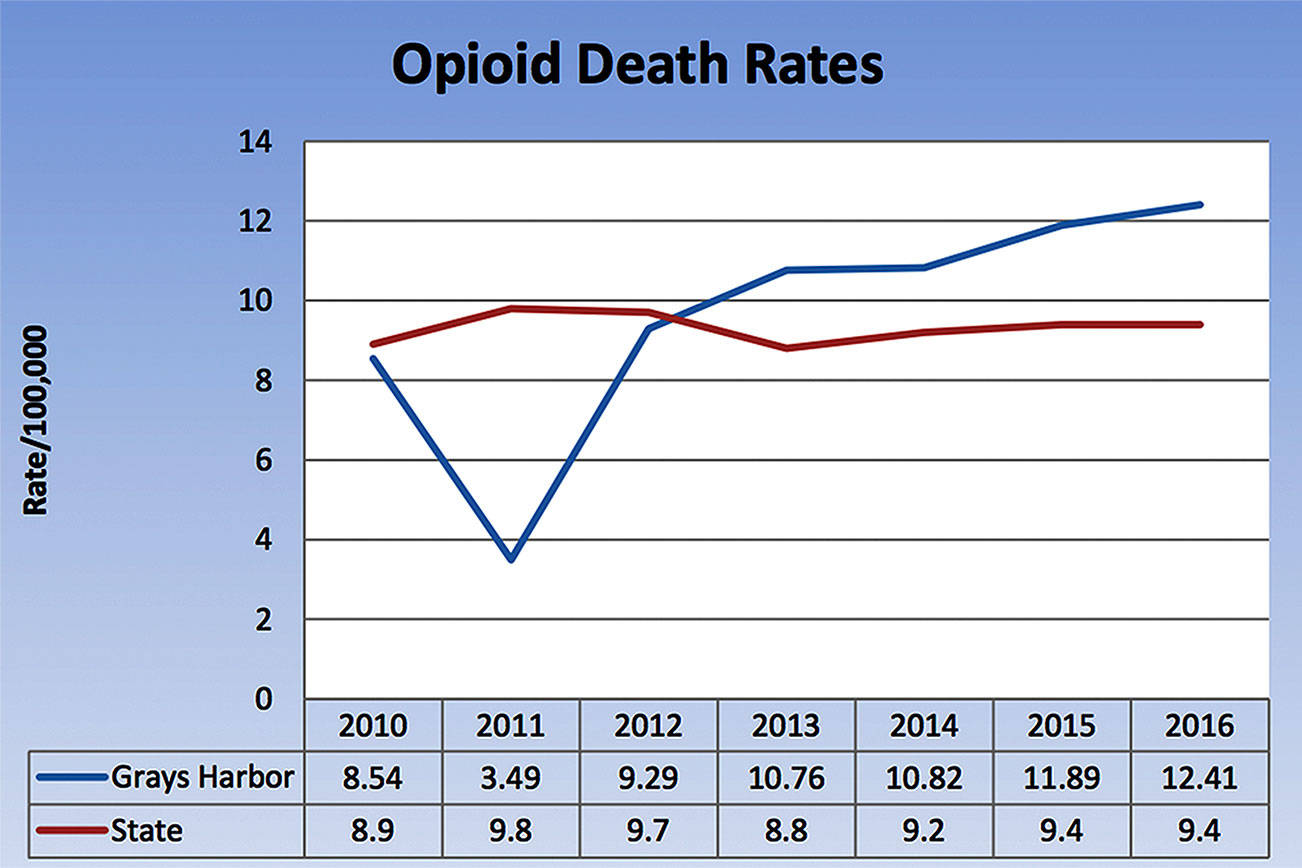With cases of opioid addiction and overdose steadily rising in Grays Harbor County, the county’s department of Public Health and Social Services has released an Opioid Needs Assessment and Response Plan that both analyzes data relating to opioid addiction and outlines strategies for addressing it in the future.
This report — released in February — was compiled by Wilma Weber and Kristina Alnajjar from Public Health and Social Services, but there was also input from a wide variety of local community groups such as law enforcement and fire departments, tribal groups, county and city officials, and schools. Going forward, Alnajjar said this would be a helpful document to reference whenever county organizations discuss how they can work to reduce addiction rates and overdoses.
“A really important piece of putting together a plan like this is to get people in discussions around what their organization or group can contribute,” said Alnajjar. “When people meet around the plan, I think that’s the most powerful work that’s being done.”
According to a recently released state health assessment, Grays Harbor County was ranked as having the highest overdose death rate per capita among Washington counties, averaging more than 20 overdose-related deaths per 100,000 people from 2012 through 2016.
Over the past decade, the response plan reports that the number of first admissions to publicly funded treatment programs for addiction has gone up by 361 percent.
In addition to reviewing programs currently offered and activities being done to combat addiction, the plan lists a number of strategies community members have suggested to reduce addiction rates.
These recommendations include, among others, adding more drug education and prevention programs in schools, developing partnerships with local agencies to educate locals on overdoses and naloxone (a medicine used to temporarily stop an overdose), and promoting use of the Washington Prescription Monitoring Program (PMP).
PMP, created in 2007, is an online tool for medical providers intended to curb prescription drug abuse by patients. It asks that medical providers record cases in which they suspect patients are abusing prescription drugs, in order to prevent future prescriptions. But Alnajjar said it can be a time-consuming process to record this data, and can lead to physicians not using PMP due to time constraints.
According to the county’s 2018 Opioids Needs Assessment Survey, while 93 percent of primary care physicians in Grays Harbor County know about PMP, only 57 percent of those people reported that they use it. That survey also reported that 64 percent of physicians say they use an alternative system for monitoring potential opioid addiction, and found that half of surveyed physicians feel dissatisfied with how they currently screen patients for drug abuse history.
Those looking to read the entire 15-page report can find it online at the “Overdose Prevention Project” webpage for Grays Harbor Public Health and Social Services.
In its conclusion, the department states that hopefully the information and suggestions provided can lead to a collective solution to reduce opioid addiction.
“The burden of the opioid crisis on our community is great,” it reads. “No single organization can tackle this crisis alone and we hope the information presented and strategies shared here lay the groundwork for a comprehensive community solution.”



